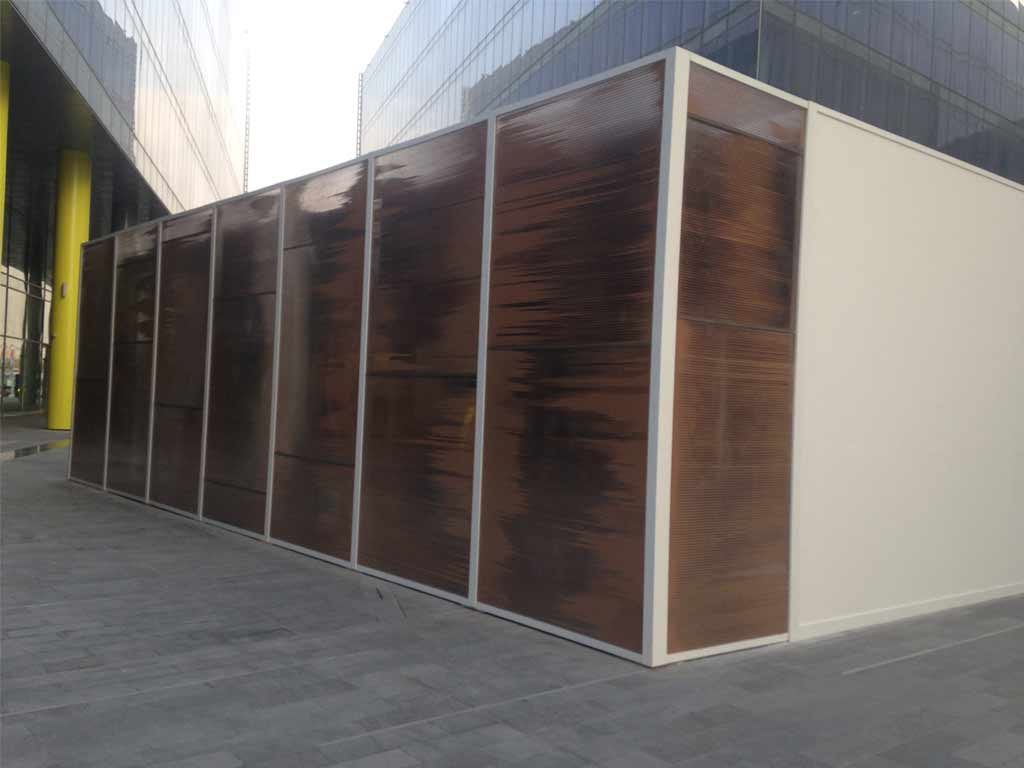There is a growing trend of throwing the word ‘heritage’ around and this was recognized by DDW through several dialogues.
As the inaugural Dubai Design week (26th October- 31st October) came to a close Saturday, we take a look at some of the discussions that took place which are relevant to us [architects].
The first event we had the pleasure of attending was the Human Centred Design workshop led by Beth Yoder, who is the managing partner at Global Teams based in Dubai. She has been facilitating engaging and creative intercultural learning and development for individuals and organizations for almost 20 years.
Human Centred Design (HCD) is a creative approach to problem solving which focuses on the people you are designing for and results in tailor-made solutions. It was an exercise in listening to the needs of the user and creating basic prototypes, which become the basis for collecting feedback.
The need to resist the urge to make elaborate prototypes was also discussed, as it makes it easier for the designer to let go of the initial design and incorporate the feedback received from the user. This process can be scaled depending on the size of the user group.
HCD process
The workshop was followed by a talk titled ‘Revisiting Heritage’. The panel consisting of Noor Al Dabbagh from Banafsajeel; Dana Al Sadek from Maraya Art Centre & 1971 Design Space; Zainab Al Hashemi, a conceptual artist and Hamad Khoory from Loci Architecture and Design. Each of the participants described briefly the various projects that they’ve undertaken which incorporate themes of HCD and revisiting heritage.
Noor and Dana discussed the importance of festivals such as Al Dhafra and Liwa date festival. It gives an opportunity for the locals to practice traditional arts and crafts and reconnect with their heritage. It helps preserve such skills, which younger generations are slowly losing interest in. They hailed local designers for their attempts to incorporate traditional concepts and patterns into contemporary objects, such as the exhibition Defashtruction at 1971 Design Space.
Zainab Al Hashemi, a well known conceptual artist, spoke about her projects that use traditional objects such as fishing nets, camel skin etc and also the matter of taking ownership for her work.
She stated that she, as the conceiver of the design takes her part of the credit and the artisans to help her create the piece, take their part. Design, after all, is a collective practice.
Hamad Khoory is an architect and partner at the Dubai-based studio Loci Architecture + Design, who designed the ‘Abwab’ pavilions at Dubai Design Week. The theme for this year’s pavilions was ‘Games: The element of play in Culture’.
The pavilion uses various regional elements such as courtyards, screening for privacy, thermal mass of traditional buildings, narrow sikkas etc. He is against the use of a traditional image for the sake of ‘reinventing heritage’ if it is not well thought out and justifiable.
Tunisian Pavilion
‘Reinventing Vernacular Architecture’ was an interesting discussion that took place on the second last day of Dubai Design Week. Moderated by Jonathan Ashmore from Anarchitect, the panel consisted of Brian Johnson from GAJ Architects, SumayaDabbagh from Dabbagh Architects and Adina Hempel from Zayed University.
Having an extensive background in projects and research that have documented heritage in the region and derived concepts from it, the discussion revolved around defining the term ‘vernacular’ in architecture.
There was a joint consensus that the meaning of ‘vernacular’ is continually changing.
Vernacular architecture is ‘sensible’ or ‘practical’ architecture. Place, needs of people, resources, climatic conditions and culture are factors that contribute to this. Above all it should respond to what people want. Nowadays, a lot of projects have ignored these aspects of contextualizing and designing interactive spaces.
Reinventing Vernacular Architecture’ panel discussion
Many new projects have tried to include features from the traditional architectural style in the literal sense, like the wind towers or mashrabiyas. This causes heritage value to be lost as it doesn’t capture the ‘meaning’ or ‘sense’ of traditional forms to allow for an evolution in architectural style for the region.
If the meaning of vernacular is fluid, we question, what is ‘vernacular’ or ‘sensible’ architecture today? What about the increasing number of energy consuming glass clad sky scrapers on our skyline today? How are they practical? Or maybe they are responding to our society’s need in terms of architectural vision?
Tell us what you think in the comments below – we’ll be happy to hear from you.
Crave more? Read about How Workspace Design Affects Your Productivity
or This Artist Challenges The Rules Of Design With Futuristic Furniture













